HoldMaster KPI's
Once your session data has been uploaded to this site, you and/or your coach can review a number of key performance indicators (KPI's) relating to your session.
Some KPI's look at the overall session summary of all shots, while a number are calculated for every shot.
The Summary Hold Quality KPIs can be compared from session to session via the Sessions Tab page.
Comparisons can also be made between dry and live firing sessions, and practice and match sessions.
These KPIs include:
- Group Size - a key measure of the sessions consistency
- Average Distance travelled in the last 0.2 seconds prior to the shot release - shows the tightness of the hold
- Average Cant Angle - The angle is not an issue but the consistency to maintain the same angle for every shot is key
- Average Hold or Breath Time - This is the time, in seconds, that a steady hold has been maintained prior to the shot release.
- Average Time between Shots - Consistent times, in seconds, between shots shows good rhythm.
- Average Hold Quality (HQ) - These are measures of Horizontal, Vertical and In-Out movements. The best HQ is 100.
The Shot Hold Quality KPI's are shown in the Statistics Tab. They include:
- Hold Quality (HQ) - These are measures of Horizontal, Vertical and In-Out movements. The best HQ is 100.
- Distance travelled in the last 0.2 seconds prior to the shot release - shows the tightness of the hold
- Cant Angle - The angle is not an issue but the consistency to maintain the same angle for every shot is key
- Hold Time - This is the time, in seconds, that a steady hold has been maintained prior to the shot release.
- Time between Shots - This is the time, in seconds, a consistent time between shots shows good rhythm.
As the HoldMaster Sensor does not 'view' a target through any optical sensors, it can only be used to analyse the quality of your hold, timing, cant and rhythm.
The acceleration data from the HoldMaster Sensor can be translated into apparent movement to show the quality of the hold, but cannot be interpretted, accurately, into actual movement and direction.
The data is used to identify the shot release through the change in acceleration. The data prior to the shot release is statistically analysed to identify the apparent 'center' of the shot.
The apparent movement is the acceleration variation around the 'center'.
One of the benefits the 3-axis accelerometer provides is that it can identify the cant and tilt (also known as roll and pitch) of the rifle or pistol.
For both cant and tilt, while the value of angle reported per shot is not important, it is critical that each shot maintains the same cant and tilt angle. It is observed that
the cant angle can and does change during a match, while the change in tilt angle of 0.1 - 0.2° is generally insignificant.
The key measure of hold consistency is shown in the group size, shown on the Summary page.
These images show groups from (left to right): Air Pistol; Average Smallbore Rifle; Master Grade Smallbore Rifle; Benchrest Shooter.
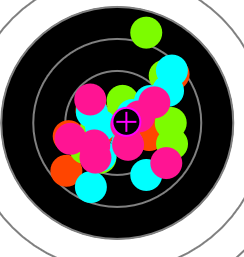
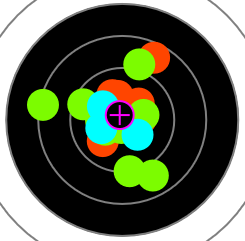

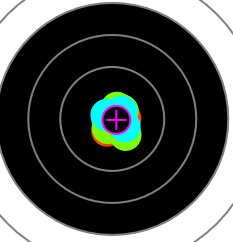
Achieving a smaller group size is one of the main goals of all competition shooters.
The acceleration data can be translated into apparent movement. These traces show clearly the different levels of hold that can be achieved.
These images the show hold for (left to right): Air Pistol; Average Smallbore Rifle; Master Grade Smallbore Rifle; Benchrest Shooter.
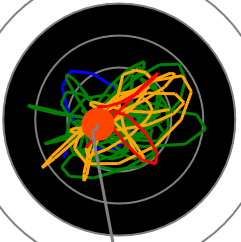
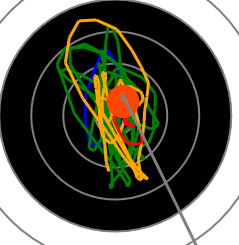

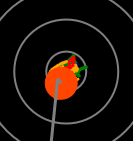
The clear goal here is to reduce the amount of movement in the last 3 seconds, and in particular the last 0.2 seconds.
Another key measure is the apparent distance moved in the last 0.2 seconds prior to a shot. Again the smaller the number, the steadier the hold.
For comparison, the apparent distance moved in the images above are: 12.85; 1.67, 0.99, and 1.25, respectively.